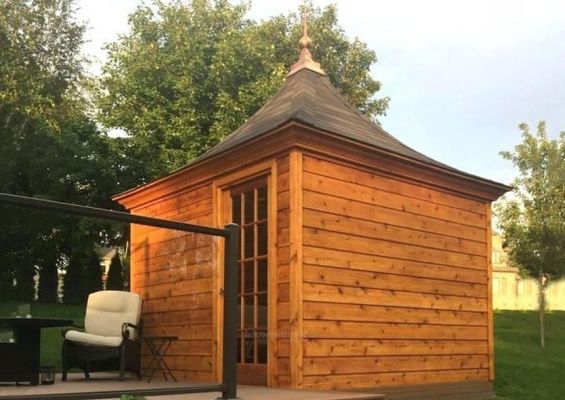Slant Roof Shed Plans 16x24 - Find Out Practical Tips For Constructing A Shed Easily

Unlike a house, a shed is simple enough that you can probably manage all or most of job by yourself. You work from one side of the crown to other. Bit of woodstain and the jobs a good 'un. Use birdsmouth cuts to attach rafters to the side walls. A shallow bed of gravel placed underneath concrete foundation blocks aids drainage and helps prevent them from sinking into soil. Install roofing felt, drip edge, and shingles. Start at (https://shedblueprintsdiy.com/storage-shed-blueprints-free) one side of underfloor area. Crosscut the cedar slats and side supports to the lengths shown in the plans. Note that the plywood siding is nailed on before the truss is raised.
Drive nails near ends of the block at a 45-degree angle -- toenail -- and fully into the joists with a framing hammer. Determine if any adjustments need to be made for a better fit, and adjust the angles and cuts on rafters if necessary. Assemble them on a flat site to avoid twisting. Every area has slightly different building requirements for accessory buildings and storage sheds. It can take hours to hammer in all nails needed to take care of all the foundation, wall, and shed roof framing, not to mention the number of blisters you are likely to end up with if you try.
Use a spirit level to plumb all the walls and to check if top plates are horizontal. No shed is going to last very long (next) if it is not sitting on level ground. When using rafters, common struts are attached to a shortened ridge board which doesn't run full length of the building. Framing second floor is not a whole lot different than framing the first. From there, you could nail timber gussets into place. It's best to assemble recess when the wall is actually being framed, because coming in after the fact when there is drywall in place can craft for a lengthy remodeling project that may require the help of a structural engineer.
Processing video...
If soil is really sloped, bigger retaining walls may be used to assemble a level boxed base. The ends of boards are more prone to absorb moisture than the sides or face, even if they are sealed or stained. Remove sections of joist at each end. As for indoor use inside shed there wasn't that much space. Truss ends are toe-nailed to top plate with 3-16d nails per end. An antique brick fireplace or accent wall can lend a homey or historical touch. Under a window are additional cripples and crutches to support window and downforce. In some cases, a plumber or another mechanical contractor might notch one to install pipes or wires.
The great news is that it is easy to find helpful tips, schematics and other information to guide you, especially if you have access to the internet. And always make drip edges on structures you want to keep. Cut a 33-inch-long piece to fit between them as a middle brace. You'll be amazed at how much easier it is to have a stable platform to work from and to set your tools and materials on. Remove a drywall or plaster ceiling to access joists at a second floor. With skids in place and level, it's time to construct the floor.
We included framing of a header above the door so you know how to do it should you decide you want to put a door or windows on the long side of shed where headers would be required. This woodworking project is about DIY outbuilding door plans free. Snap chalk lines between marks from end to end. The posts are checked for plumb before and after attaching it to fence. This style of outbuilding roof is one of the most common and can be utilized for building playhouses, garden sheds, utility sheds and more. The last pair of garrets has a collar tie recessed across the front for added strength.
Spacing could be changed or tweaked in order to get siding to land on top of doors and windows. We wrapped the structure in tar paper starting at the bottom to help seal out any moisture and wrapped around edges of openings like windows and doors. The pressure- treated floor braces will then rest on the footings. Angle nails so go through joist and into the frame. It is best to find out what they are before building so you are not forced to move or worse, tear down your new shed. Not a permanent structure so taxes are different or don't exist.